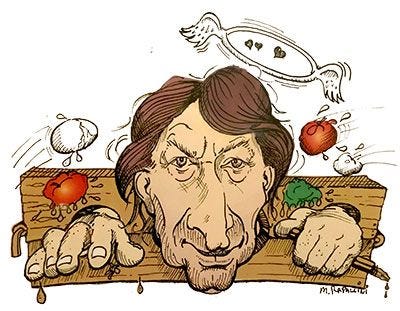t is vital that all cancer patients understand the theory of marginal gains.
Not long ago I read that leading athletes were, apparently, mostly wearing the same brand of running shoe; a shoe which they believed had an advantage over all other running shoes. Athletes who did not wear that brand were, of course, complaining that they didn’t stand a chance. Apparently, the popular shoe was lighter and designed rather differently. It had the usual cushioning but the mid sole was stiffened and this helped to reduce the amount of energy runners expended during a race. By slightly reducing the energy they used up they could, of course, run faster.
The concept of ‘marginal gains’ is now extremely popular in all forms of athletics. I was impressed by the way the Sky cycling team used the technique to win the Tour de France several times. The idea of improving competitiveness by using the right equipment isn’t a new one. I can still remember how French cyclist Laurent Fignon lost the Tour de France by eight seconds in 1989. The final stage of the Tour was a time trial, and the unexpected winner was an American called Greg Lemond who was using special handlebars and an aerodynamic cycling helmet. Fignon rode with ordinary handlebars and no helmet.
Years ago, a French director sportif called Cyrille Guimard, who looked after five times Tour de France winner Bernard Hinault, was an early proponent of marginal gains. The people who originally devised this philosophy realised that the three week-long Tour de France is often won by a relatively small time gap and that the very top cyclists are pretty much of a muchness. There isn’t that much difference between them. And most have the same basic training programme. It is therefore vital to do everything possible to gain small improvements. If you find a new type of material for cycling shorts which reduces air resistance and gives you a second a day then take that second a day. If you find that feeding the cyclists brown rice gives them another second a day then feed them brown rice. And so on and so on. The aim is that by making tiny improvements you will eventually end up with an advantage of a couple of minutes in a three week race. And that couple of minutes will probably be enough to win the race.
I firmly believe that this theory can be applied to medicine in general and, in particular, to tackling cancer. The concept of ‘marginal gains’ is, of course, precisely what patients should do to keep themselves healthy and to improve their survival chances when they are ill. And there are many things that cancer patients can do to improve their chances. Some of the gains may be small but they are cumulative, and 2% here and 3% there soon add up to an important number. If you find a treatment that adds a 20% improvement then you take it. If you find a treatment that adds a possible 3% improvement but has a probable 5% chance of making things worse then you don’t take that one.
Note
The essay above is taken from the new book `What doctors won’t tell you about chemotherapy’ by Vernon Coleman. The book has just been published in paperback. To purchase a copy please CLICK HERE
Copyright Vernon Coleman October 2024
Discussion about this post
No posts





Thank you for this...I have just started navigating my way through treatment and it is very confusing - which can lead you down the path of fear and negativity. Any piece of information you can hold onto as stable datum is so extremely helpful, and I really do appreciate you sincerely.